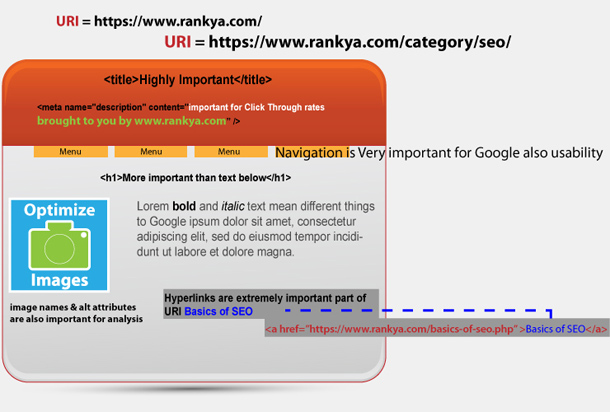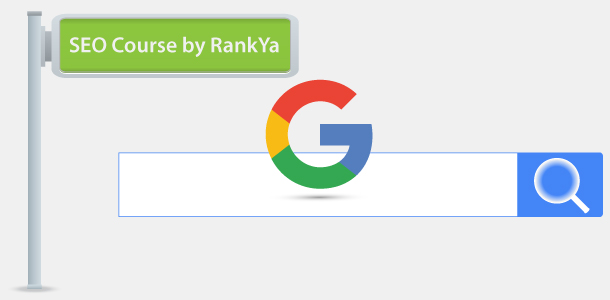Search engines are just that “codes” and Google has advanced algorithms. What happens is that Google’s web crawling programs (also known as Googlebot) will request an URLs (or, URI, Uniform Resource Identifiers, as in address of a web document) and fetch URL and sort through the contents within the requested URL.
This URL can be bring many different file types Google indexes not just typical web pages, but many different file types such as images, PDF documents and many other file types. These are called resources on internet.
Knowing this, Google algorithms analyze web pages trying to identify the content through text analysis and many other factors. But because Google search engine is limited due to the HTML (Hypertext Markup Language) elements such as URL name, web page titles, heading tags, links, and other HTML elements, you can optimize to guide Google to better understand your web pages.
Also, because HTML elements have different meaning, you can accordingly further guide Google as to the meaning of your web pages.
For example: textual content found in h1 (heading tag) will send a stronger signal to Google when calculating relevance for ranking as opposed to the text found in the footer section of web pages. Although some SEO experts may say that this is insignificant, nothing could be further from the truth because when you learn how Google reads your web pages, then you can better optimize each and every web page element.
Video Explaining How Google Reads Web Pages
How Can This Knowledge Be Useful?
Knowing how Google has to rely on certain web page elements, you can begin to insert important keywords within these HTML elements as detailed in the image below:

Keep in mind that in the FREE SEO Course introduction video, I have detailed the importance of customer profiling and also provided you with an editable PDF document (SEO & Online Marketing (PDF)) which you can use for your own SEO projects.
The main reason that you should conduct research about your ideal audience is because search engine optimization also entails web copywriting and website usability improvements.
For example: if your ideal audience is young people, then your website can be bit more complex, bright, funky, perhaps even 16px font-size for web copy area, on the other hand, if your target audience is elderly citizens, then your website has to be very simple and easy to navigate through, as well as font-size can perhaps be 18px with larger buttons for call to actions.
Because the easier it is for your website visitors to use your site, easier it is for search engines like Google to also understand your site and its structure for top organic rankings.Free SEO Course Category
Free SEO Course Category